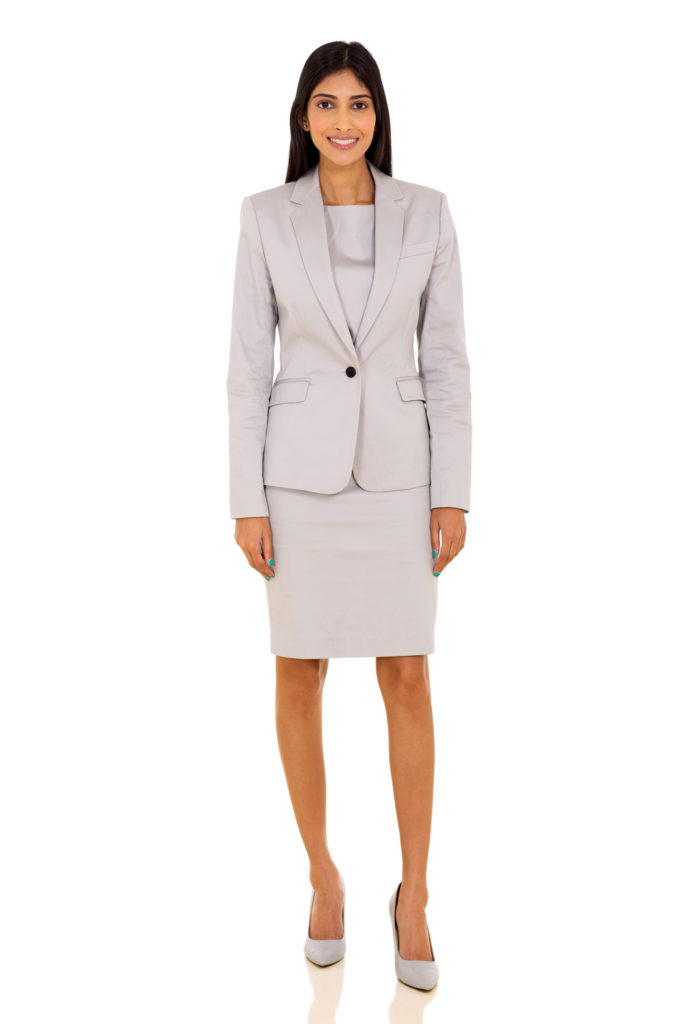Your Next Media Interview: How to Look Great on TV
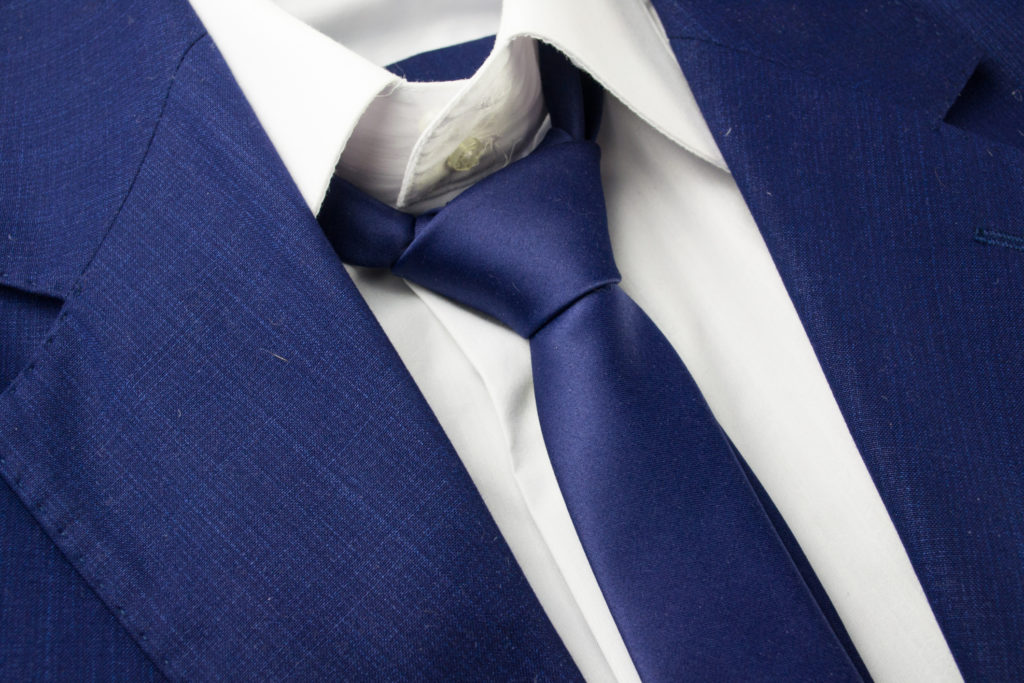
Your message is certainly important, but when it comes to a televised media interview, you also want to look great on TV. That’s because the clothes you wear, the cosmetics and hairstyle you choose, and the accessories you use all play a crucial role in getting that message out to your audience.
Studies have found that people develop an impression of you in mere moments. The exact timing varies, but, one study found it can be as little as a millisecond. You can’t control the timing, but you can control what it is that they see. When you look good, you feel good. That confidence is an important part of making a great first impression, as well as connecting with your audience.
Whether you are on air for just a few minutes or a longer segment, you must be laser focused on what you want to say and how you want to say it – elements we cover in our media training. With the following tips you also tackle another important task – focusing on how you look when you are saying it.
The more attention you put on your physical appearance, the less it distracts from the message you want to share.
How to Look Great on TV
All those anchors, news show hosts, correspondents, and analysts make it look easy, but putting together a look for a TV interview takes time and effort. We begin by peering into your closet.
Your attire
Your approach to what you wear for your TV appearance must be targeted and strategic. The result is this: an audience that sees you as you want them to see you – an embodiment of your message, your brand, and your story.
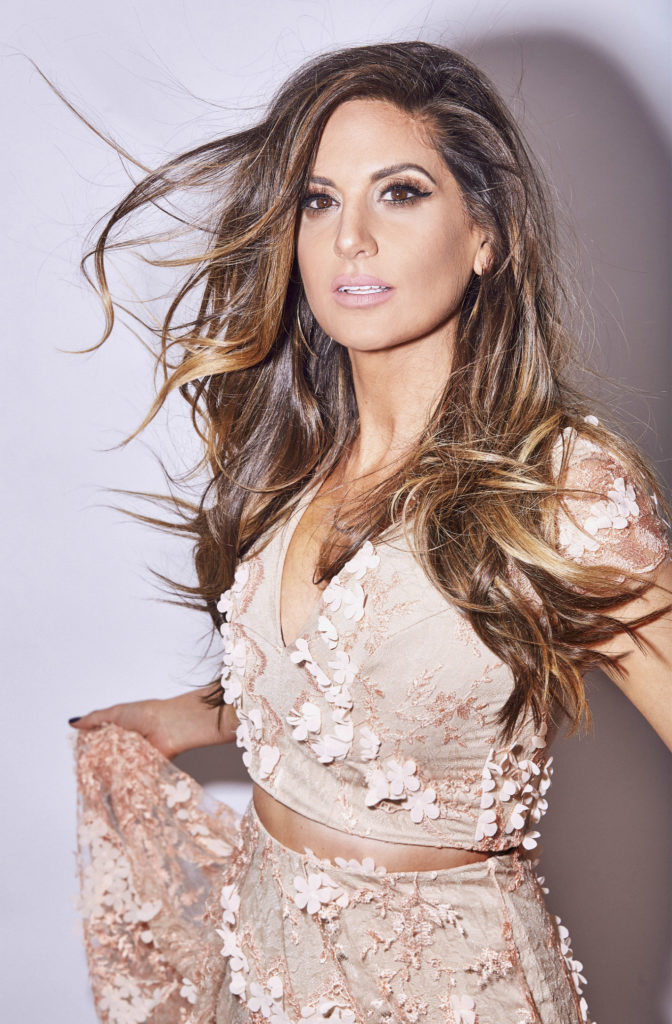
Sonia Isabelle
“You should consider your subject matter, your audience and the show’s style when it comes to your wardrobe,” says Sonia Isabelle, an Emmy Award, Associated Press, and Telly Award-winning lifestyle host and producer. She hosts Celebrity Page TV, a nationally syndicated entertainment show. “I think someone who is doing a fashion segment can take more liberties with their wardrobe and their hair and makeup. They can be more flirty and fun. If you are going on as a political commentator or you are dealing with a serious subject matter, you want to keep it more basic, solid colors, something more neutral.”
The cut
The cut is the style or shape of the garment – and what you choose should flatter your body and create a clean and sharp silhouette. Try to avoid buying the outfit the night before your interview. You best outfit is the one you know flatters you and looks good – and you have the road tests to prove it. Isabelle suggests having a friend record you on your phone in your outfit from all sides. That way you can be comfortable if you are filmed from the waist up, if you are standing, or sitting on a stool or in a director’s chair.
Here are some other considerations:
Define your shape. A boxy jacket or suit or a billowy dress (without a defined waist) is going to come across that way on camera – even if you are toned and fit. Wear more tailored suits, fitted sports coats and dresses, or create waists with belts to look great on TV.
Best choices. For women, a sheath dress with a scoop collar is often the go-to. (You could also opt for one with a turtleneck collar, see right.) It is a straight, simple cut that is a bit more fitted around the waist and hips. For men, tailoring your suits and sports jackets can be an investment, but you can avoid the criticism that dogged former U.S House Speaker Paul Ryan several years ago. While running as the 2012 vice presidential nominee of the Republican Party, Ryan was knocked for wearing suits that not only looked “boxy,” but, also, too big.
Be comfortable. Choose silhouettes that allow the material to move and stretch – natural fabrics or blends work well – and have a low sheen – you don’t want to look slick and oily. If the outfit is tight when you are standing, sitting is likely a problem. On women, such constriction can cause a skirt to rise uncomfortably above the knees and create ripples of wrinkles across the lap. For men, an oxford whose buttons are already stretched will look as if they are about to pop.
The color
If you have been buying our own clothes for some time, you generally have a sense of the colors that look better on you than others. That certainly is a place to start. However, there are some colors that don’t work well in TV land.
Here are some color considerations:
Steer clear of certain colors. In the past, red, white, and black were taboo. The advent of high definition television and better camera technology make such warnings less dire, but all three still cause problems. The red you saw in your mirror may come off closer to pink or a bit rustier on television. White and black, being at the extremes of the color spectrum, cause problems with contrast – with the former appearing too bright on camera and the latter too dark.
Stick to solid, bright colors. Stay in the center of the color spectrum for everything from suits to ties – blues, grays, and jewel tones, notes author Lillian Brown in Your Public Best: The Complete Guide to Making Successful Public Appearances in the Meeting Room, on the Platform, and on TV. Blues, including navy, cobalt, and French blue typically look great on TV, as do grays (dove and slate); purples (dark violet, lilac – similar to the photo at right), and burgundy. A white shirt under a jacket is OK, but a light blue or pastel is better. Solid jewel tone colors generally work well with any skin tone, such as sapphire blue and amethyst purple.
Avoid Green. If you know you will be seated in front of a green screen, don’t wear it. Isabelle says even if there is a hint of green (some blue-greens too) in a necklace or tie, that part of you will disappear.
Do Your Homework. Get a sense of the set and backdrop of the studio, Isabelle says, so you can avoid clashing with the color or pattern design. Little things loom large on the small screen, which is why it’s best to aim for understated elegance. Then, your message will always be the most important point that is being broadcast.
The pattern
That suit with the thinly spaced pinstripes looks great on you, but, on screen, it’s likely to vibrate. Be aware of the effect of the patterns you choose.
Here are some considerations: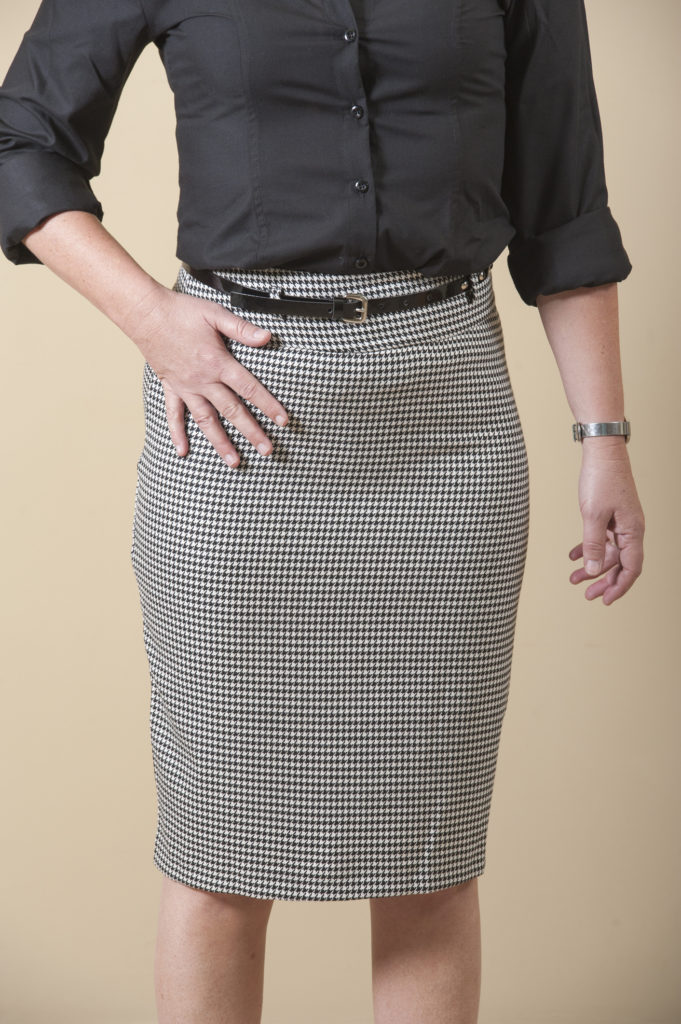
Unwanted special effects. Certain patterns cause a moiré effect, which creates a wavy, vibrating pattern when seen on the screen (such as the effect in the photo at right). This is more prevalent with small, tight patterns, such as herringbone, thin stripes, and tiny polka dots. It’s best to avoid them.
Timeless appeal. You don’t know how long your interview will live in the digital ether. The chevron and tiny polka dot patterns of today may be gone in a snap. So, a great, classic solid color will always be a classic, and rarely goes out of style.
Your overall approach to attire
Be true to your look. Your look needs to be aligned with your brand or your organization. The CEO of an edgy and innovative startup who also is edgy and young may want to ditch the tie and jacket for a fashion-forward dress shirt, skinny-fit chinos, and suede chookahs.
Look like yourself
Your look also must resonate with who you are – you don’t want to go on television wearing a costume. Rather, your clothes should be comfortable; congruent with your personality and style; and enhance who you already are. If the CEO of that edgy and innovative startup is not so edgy and not so young, then a traditional button-down in a solid color, rolled up sleeves, and looser but still fitted chinos and suede loafers aligns not only with the business but the person who is talking about that business.
Your look
Cosmetics
To look great on TV, you’ve got to put your best face forward. The TV studio lights can create shadows, highlight imperfections, and bring attention to features you’d rather keep out of the spotlight.
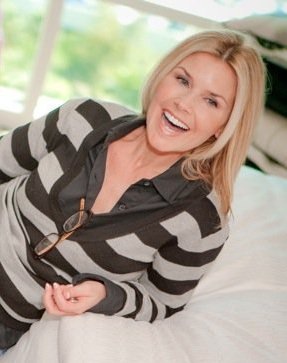
Tracey Garcia
“Lighting is key,” says Tracey Garcia, a makeup artist who runs her own eponymous Washington, D.C.-based makeup and hairstyle service after having spent more than 14 years as a hair and makeup artist for the Washington, D.C. Fox News Channel bureau. Makeup, when done well, she says, can counter the less desirable effects of lighting that can affect all skin tones – dark, under-eye circles, washed-out features, and eyes that don’t pop.
If your local news station does not have a makeup artist, or if you do not have access to the makeup artist on a national program, you can create a TV media interview-worthy look. Whether you are familiar with makeup or not, she suggests going to a high-end cosmetics counter for help in finding the right shade for concealer, powder, and foundation for your skin tone. It may require mixing and matching several shades to get the right look.
“Experiment with foundations, by seeing what it looks like in the store and then take a walk outside,” she says. “Make sure it is properly matched to the skin on your face.”
This is the order in which she works:
The brows. She refines and reshapes them, making sure both sides match – for men and women.
The eyes. “They have to pop,” she says. She says to work on the eyes first (for women) by applying concealer under the eyes, then sheer powder, and then a light base on the lid, before adding additional lid colors, liner (she prefers liquid), and finishing with an under eye brightening setting powder. Be sure to lighten the corners – where your nose meets your eyes and shadows more readily form. If you are adept and comfortable doing it, you can apply some fake lashes (don’t do it for the first time for your interview) and mascara.
The rest of the face. Apply foundation, which for TV is usually a thicker cream (though liquid works, too), and take a darker powder (or bronzer) to create a contour in the area between the jaw and under the cheekbone – she says there are videos and books that can help you to nail this skill – and blend it with a sponge or brush. She says don’t forget the neck, just blend everything – you don’t want a line of demarcation where makeup ends and your natural skin begins – and avoid getting makeup on your clothes.
The lips. She then moves on to a not-too-shiny gloss. If you are using lipliner, make sure to blend well. Pinks, corals can work. Brown suggests a shade that more or less matches the color of the inside of your mouth.
You can see her progression in the following video:
Garcia says men have similar issues, including shadows under the eyes and washed-out coloring.
The face. She begins with foundation (cream better counters the 5 o’clock shadow) and then moves on to powder.
The eyes. She uses a light powder or shadow to get them to pop – both lightening from below and on the lid.
She said it’s good to keep your lips hydrated – even if that is something as simple as lip balm.
It’s OK to go a bit darker for television, she says. However, avoid choosing a shade that is too light to cover those under-eye circles. Otherwise, viewers will notice the two bright white arcs under your eyes.
If you only have a few minutes to get your makeup ready before you go on, focus on your eyes. Just don’t let your look come at the expense of your need for speed. Make sure to blend and take care not to smudge.
As for hair, for women, a tousled hairdo may look good if you are going out, but it doesn’t look great on TV. Hair should stay in place (though you want to avoid a “helmet” held in place with copious amounts of hairspray). It should attractively frame your face and not block your eyes. Invest in a quality anti-frizz product that tames the flyaways and frizzy ends.
For men, it’s largely the same advice. If you are bald or balding, powder your pate – with a color that matches your skin – to reduce the shine from the lights.
In general, you don’t want to mess with your hair, such as fidgeting with a bang that falls over your eyes or a section of hair that hides your face.
Your overall approach to your look
Your makeup and hair should create an enhanced version of you. Remember, you can always take off that makeup and pull your hair into a messy bun once the interview is over.
The extra details
Accessories can elevate a simple outfit or add pop if you have opted for a solid, more conservative color. They can be tricky, too. Here are some items to avoid:
Anything that dangles. Long necklaces and earrings may interfere with clip-on microphones or distract an audience. Also, scarves (on women) can be problematic. They can create rustling sounds on the mic or muffle your audio.
Anything that jangles. Noisy bracelets or clinking beads will become distracting. Isabelle said a producer may ask you to remove such problematic accessories.
Anything that glints. If your jewelry is highly reflective, it may catch the lights and cause a glare. That goes for glasses, too. Ultimately, however, you have to balance your look with your comfort. If you choose to keep your glasses over contacts, one option is to invest in lenses with anti-reflective coating.
Anything that distracts. Logos (or pins) that are relevant to the message or represent a position you advocate can be a worthy addition. Just be mindful that everything you have on can be seen and will be parsed out by the audience.
Your overall approach to the details
You don’t want to be excessive. While a bold, statement necklace can look good, simple and understated always works and looks great on TV. As with every other aspect of your look, your accessories must reflect who you are, enhance your look, and not distract from your message.
A few final tips:
- Arrive early for your interview and be ready to go. However, if you are worried about wrinkling your clothes in transit, arrive in casual clothes with your on-air outfit in a garment bag.
- Take along several emergency kits – one for makeup; one for hair; and one with extra essentials, a pair of pantyhose, safety pins (for minor wardrobe malfunctions), etc.
- Give one final dusting of your lapels and shoulders and take a quick look in the mirror. If the lights and excitement caused you to perspire, take a tissue, or blotting paper, and blot it away.
Ready for prime time
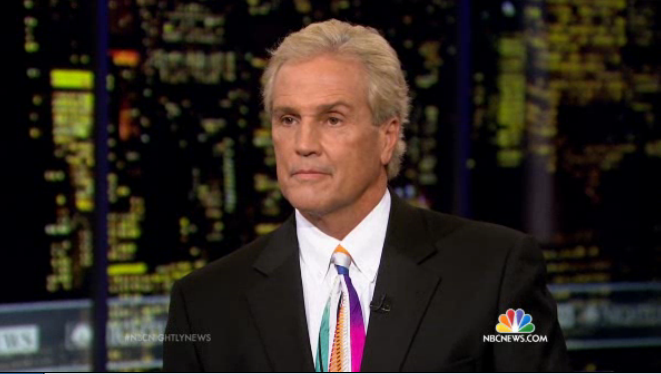
Greg Feith
If you think viewers are less than vigilant, we’ll say this: our most commented upon blog post was about ex-National Transportation Safety Board investigator Greg Feith, an aviation safety consultant and expert for NBC and MSNBC, whose choice in ties falls decidedly into the category of personal taste.
Ironically, all this work on physical appearance is to ensure what you wear does not distract from the message you want to tell.
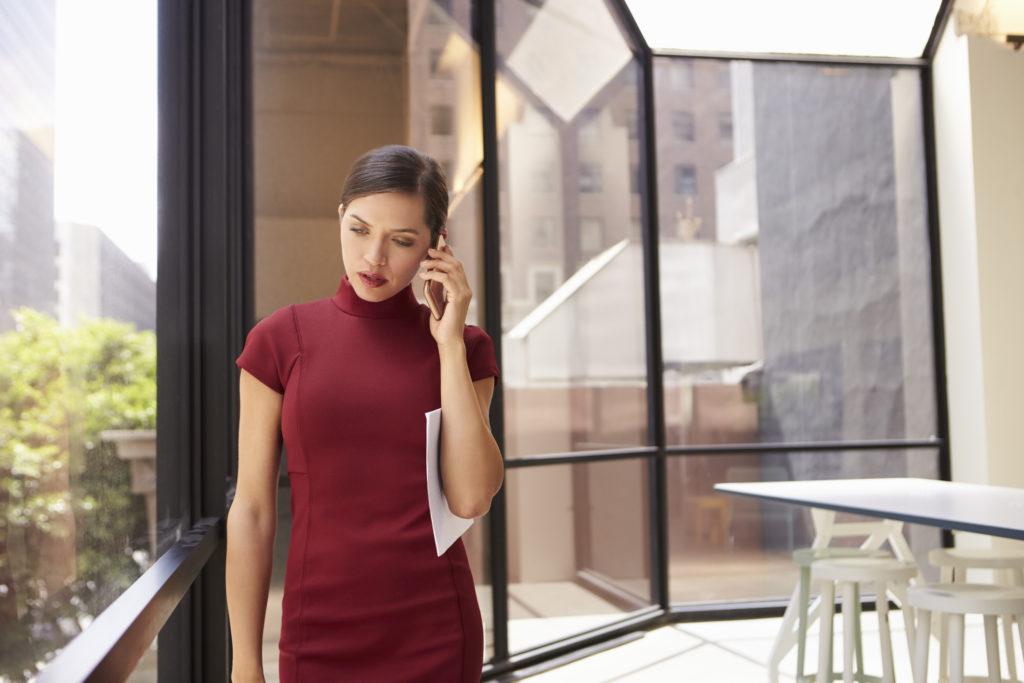 Best choices. For women, a sheath dress with a scoop collar is often the go-to. (You could also opt for one with a turtleneck collar, see right.) It is a straight, simple cut that is a bit more fitted around the waist and hips. For men, tailoring your suits and sports jackets can be an investment, but you can
Best choices. For women, a sheath dress with a scoop collar is often the go-to. (You could also opt for one with a turtleneck collar, see right.) It is a straight, simple cut that is a bit more fitted around the waist and hips. For men, tailoring your suits and sports jackets can be an investment, but you can 